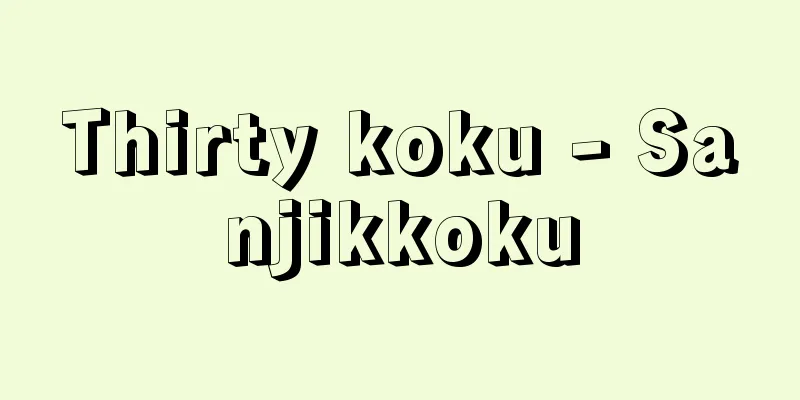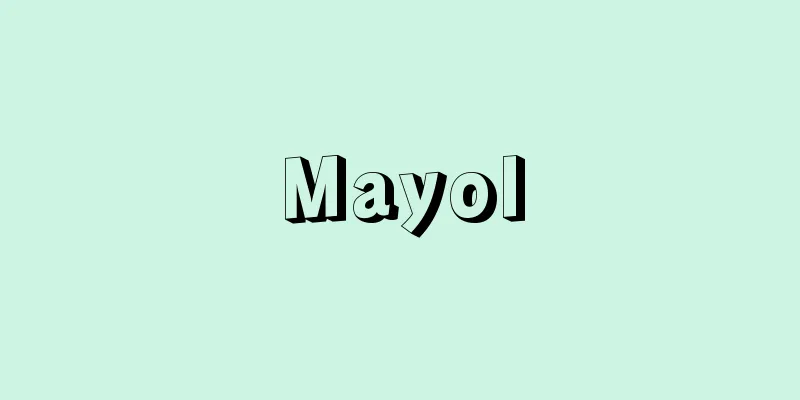Thirty koku - Sanjikkoku

|
Rakugo. It is a Kamigata Rakugo story, and its correct title is "The Thirty Koku Treasure Boat" or "The Thirty Koku Dream Passage." It is said to have been created as the finale of "The Visit to Ise Shrine." It is said to have been performed in Osaka by Katsura Bunji II during the Bunsei era (1818-1830), and has been passed down from the first Katsura Bunshi to the fifth Shofutei Shokaku to the present day. It was brought to Tokyo from Osaka by Tachibanaya Enkyo IV in 1884 (Meiji 17), and passed down to the fifth and sixth San'yutei Ensho, and is still performed today. The 30 koku boats were boats that traveled between Kyoto's Fushimi and Osaka's Hachikenya on the Yodo River during the Edo Period. They carried 30 koku of luggage and passengers, and took half a day to go down (Kyoto to Osaka) and one day to go up. The two Edo-bound travelers sketch the scenery as they board a 30 koku boat at night from Kyoto's Fushimi down the Yodo River. The story is full of fascinating details about daily life, including the boathouse in Fushimi, the conversations between passengers on the boat to the background of the boatman's boat song, and the "kurawanka boats" that come to sell food. The variety of characters, the regional accents of Edo and Kamigata, the boat song that is the highlight of the story, etc. make it very difficult to direct. The punch line of the original Kamigata Rakugo is no longer used today, so the story sometimes ends with the Tokyo style, in which a passenger with a long neck appears, but today it often ends with the boatman's boat song. [Kazuo Sekiyama] Source: Shogakukan Encyclopedia Nipponica About Encyclopedia Nipponica Information | Legend |
|
落語。上方(かみがた)落語で、正しくは『三十石宝の入船』または『三十石夢の通路(かよいじ)』。『お伊勢(いせ)参り』の終編としてつくられたといわれる。大坂では文政(ぶんせい)年間(1818~30)に2代桂(かつら)文治が演じたといい、初代桂文枝から5代笑福亭松鶴(しょうふくていしょかく)を経て現代に及んでいる。東京へは、1884年(明治17)に4代橘家円喬(たちばなやえんきょう)が大阪から移し、5代・6代の三遊亭円生(えんしょう)に伝わり、今日に継承されている。 三十石とは、江戸時代に淀川(よどがわ)の京伏見(ふしみ)と大坂八軒屋の間を往復した三十石船のこと。荷物30石のほかに客を乗せ、下り(京→大坂)は半日、上りは1日かかった。江戸下りの2人の旅人が、京の伏見から三十石の夜船に乗って淀川を下る風景をスケッチ風に描写する。伏見の船宿のようす、船中で船頭の舟唄(ふなうた)を背景に交わされる乗客たちの会話、食べ物を売りにくる「くらわんか船」のようすなど、風俗資料としても興趣にあふれている。登場人物の多彩さ、江戸、上方などの地方なまりの表現、聞かせどころの舟唄等々、演出は非常にむずかしい。本来の上方落語の落ちは今日では通用しないので、ろくろ首の乗客を登場させる東京式でサゲることもあるが、今日では船頭の舟唄までで切ることが多い。 [関山和夫] 出典 小学館 日本大百科全書(ニッポニカ)日本大百科全書(ニッポニカ)について 情報 | 凡例 |
>>: The Three Seven Legends of Nanka Dream - The Three Seven Legends of Nanka Dream
Recommend
San-sagari
The name of the shamisen tuning. The 3rd string of...
Toyokawa
A river that runs through the eastern Mikawa regi...
Akahitsu - Red chest
〘Noun〙 (meaning "clean and pure chest") ...
Gabriel García Moreno
1821‐75 Ecuadorian politician. Born into a disting...
Calcium hydrogencarbonate - Calcium hydrogencarbonate
The chemical formula is Ca(HCO 3 ) 2 . It is also ...
Eustathios
?-1193 to 98 A saint of the Eastern Orthodox Churc...
《They》 - They
…Many of his works deal with violence and murder ...
Sadamori So
Year of death: 22 June 1452 (9 July 1452) Year of ...
landscape design
…Until then, it was called saku seizai (landscape...
Barbad (English spelling)
…In biographical literature, the well-known work ...
Waller, TW (English spelling) WallerTW
...Also, the pianos in jazz clubs are usually out...
"Kannon repentance method"
…(1) A classification of Buddhist memorial servic...
Grasshopper (grasshopper)
A general term for insects belonging to the superf...
The Great Mogul Era
The Bunka-Bunsei period, also known as the Kasei p...
Poromera
…However, a few species exceed 50cm in length, an...









